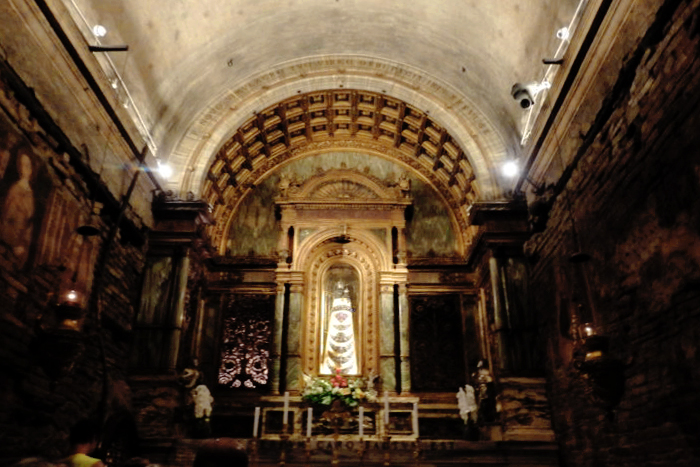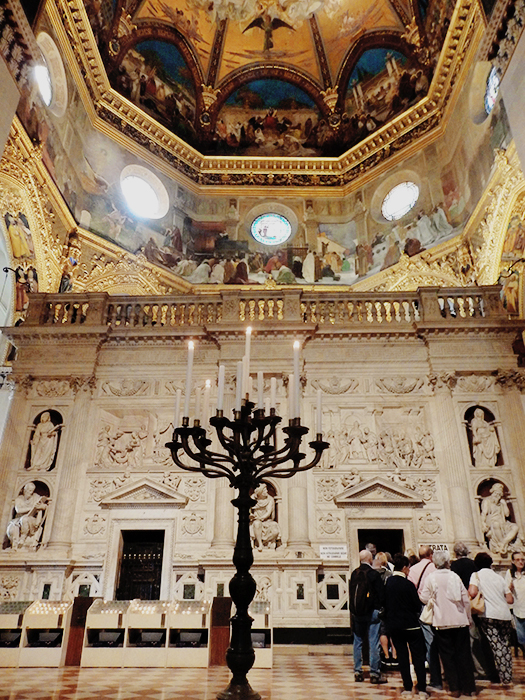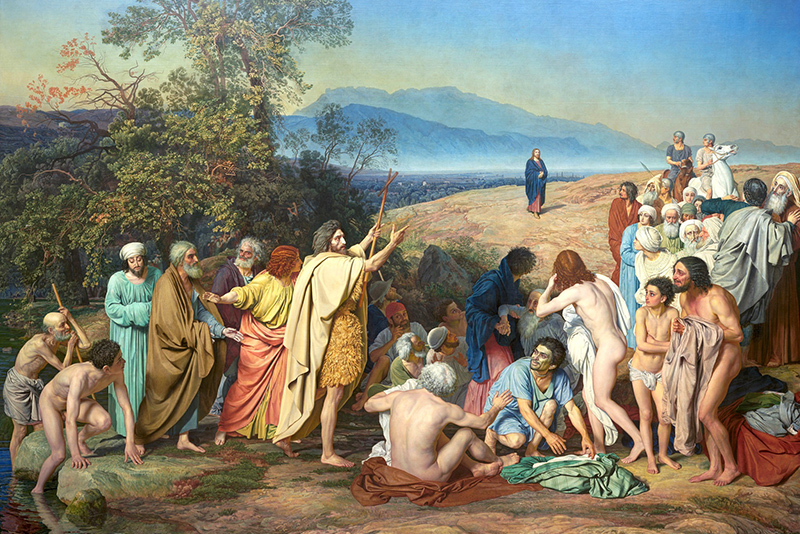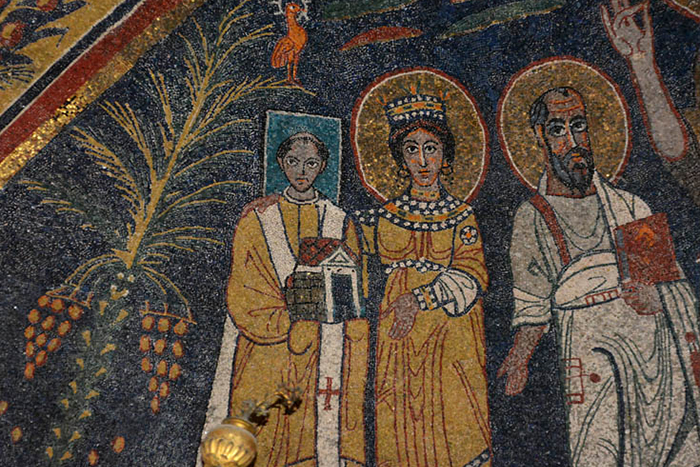
Today, the Holy House in Loreto (or as it is called by the Italians, Santa Casa) is one of the most revered shrines associated with the name of the Virgin Mary, and one of the most beloved places of pilgrimage in Europe. According to a 14th-century legend, the House of Our Lady was moved to Italy from Nazareth by heavenly Angels. We interviewed Timothy Kitnis, a historian and the head of the Apostle Thomas Pilgrimage Center in Europe, to find out whether the Angels had actually been there and what the history of this house has been.
Is the story of the rescue of the House of the Mother of God by the Angels from heaven just a fairy tale? Or were there actually Angels?
As it often happens, folklore turned the real operation of moving the House of Our Lady from Nazareth to Loreto into a beautiful legend. The first person to criticize it openly was Bishop Porphyrius (Uspensky), a Russian traveler and author of many scientific works. He argued in his book The Sacred Sites of the Italian Land that it was impossible to interpret the words about the rescue of the holy house “by the Angels from heaven” literally. In fact, the House of the Mother of God was transported from Nazareth to Loreto by a Greek family of Angelos. They were influential in Epirus, both in the military and in the trade circles. When Saladin began his violent conquest of the Holy Land in the 13th century, the House of the Virgin Mary, as well as other holy places, was in great peril. The Angelos family first moved the house to their homeland in Dalmatia (present-day Croatia) to save it from destruction by the Muslims, and then to Loreto, Italy, a year later.

Why did the Angelos family do this?
There is nothing surprising about it. Though it was easy to evacuate clothes or icons, moving a house was quite an undertaking. They needed a ship, workers, and serious expenses. Only influential and wealthy people could do it. There are different opinions about the family’s motivation. Some people think that this was all just business, and the Greeks just wanted money. However, there are those who think that the Angelos family was motivated by a sincere desire to save the sacred place from destruction. Perhaps, godliness and practical skills simply converged in that case, as they often do.
Why was the House of the Mother of God moved to Loreto?
The region of Marche and the town of Loreto in particular were part of the Papal State, so when the House of Our Lady was moved to Loreto, it automatically fell under the aegis of the Pope. In addition, the Angelos family had a documented connection with a vicar of the Pope, the Bishop of Recanti. After the Pope’s messengers were convinced of the authenticity of the House, it was delivered to Loreto, and the vicar himself began to fortify the Holy House in its present location.

What does the Holy House look like today?
The Santa Casa Basilica is situated on a picturesque hill and its dome is visible from afar. It is a huge temple with many chapels, a veritable masterpiece. The best artists of their time, such as Melozzo da Forli and Luca Signorelli, took part in designing the basilica. There is a marble ark at the center of the church, which was commissioned by Pope Julius II in 1507 to the outstanding architect of that time Donato Bramante. There is a small room inside the precious cover that was transported from Nazareth. The Holy House has only three walls and the following parameters: 8.5 by 3.8 metres in length and width and 4 metres in height. There is a statue of the Mother of God of Loreto in it. The statue of the Mother of God of Loreto was also described in His Eminence Porphyrius (Uspensky)’s diary. The Loreto Madonna with the Child is one of the most famous and revered works of art of its kind in Europe. Interestingly, it is very similar to the icon of the Mother of God the Enlightener of Minds which is highly honored in Russia. However, the 14th-century sculpture of the Mother of God was destroyed in a fire in 1921. A new statue was created during the restoration and renovation of the church by Leopoldo Celani.

Now that the church and the sculpture have been recreated, couldn’t the Holy House itself be built in Italy in the 14th century? How do you know it’s authentic?
Pope Sixtus IV issued a bull in 1491, which confirmed the authenticity of the House. Pope Julius II issued another bull on the same issue in 1507. Later, documents confirming the hypothesis of Bishop Porphyrius (Uspensky) were found in Byzantium in 1900. The Holy House was indeed transported by the Greek family of Angelos from Nazareth to Dalmatia, and then handed over to the Pope’s vicar in Loreto, Italy.
In the 20th century, when a lot of holy objects were investigated by researchers, the authenticity of the House of the Mother of God in Loreto was also examined. To this end, special expeditions were organized in 1962-1965 with the participation of historians and archaeologists.
They ascertained that the Holy House was a typical Palestinian home, most likely belonging to a poor family. Unlike other houses in Loreto, it was built without a foundation and had only three walls. In Palestine, houses were often adjoined by a rock in which a cave had been cut out. This was a means of saving energy and money for construction (today, the grotto carved in the rock where the House of the Virgin Mary stood is one of the holiest places of the Annunciation Basilica in Nazareth).
The stones that the Holy House was built of were also uncommon for Loreto, where there was no quarry. On the contrary, similar rocks were often used in Palestine. Numerous marks were discovered on the rocks of the House of Our Lady. The historians who examined the house found out that they date back to the 1st century. Some rocks were numbered. It is likely that the house was disassembled in Nazareth, the rocks were numbered in the correct order, and then they were reassembled in Loreto following the same order.
Does it mean that today no one has any doubts about the authenticity of the House of Our Lady?
The authenticity of the House has been confirmed by studies, this is the official position of the Church, and the rest is a matter of faith. In my opinion, however, the details of the story and who and why participated in it are not as important as what we have today. Jesus taught that every tree is known by its fruit. The fruit of this story is this: Loreto is not only a famous historical, cultural, and educational center nowadays. It is a place where people get healed, not only physically, but also spiritually. It is a place where people come because they promised to give thanks and to receive the grace of the Holy Spirit and the Mother of God. This is a global Christian center, where Catholics and Orthodox pray, and where the Protection of the Mother of God is visible.
Originally published by FOMA Magazine
Translated by The Catalogue of Good Deeds



